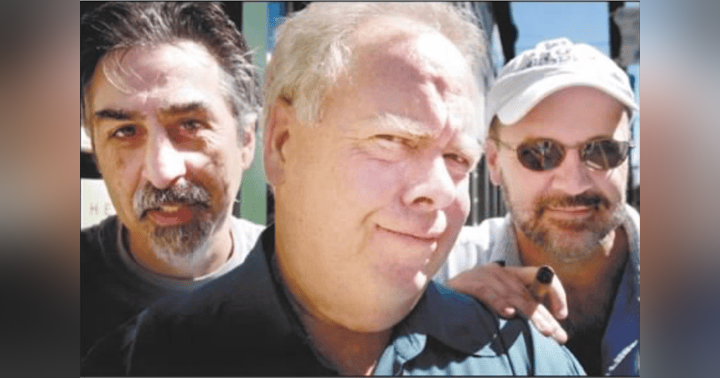
ABOVE, a view of Philadelphia in 1840, from the collection of the Library Company of Philadelphia.
We can see in this image a view of the Philadelphia waterfront, looking across the Delaware River from New Jersey. The City of Camden is actually in greater detail, because it is closer. In the middle of the river there is a steam ferry boat heading out from the Market Street Wharf. This is just the sort of ferry that the unfortunate Mahlon Heberton took, when he was murdered by Singleton Mercer on February 13th 1843. The road leading to the Camden ferry slip, where Mercer was arrested, can be seen in the foreground.
Around the central image are five smaller views of the "principal buildings" of the City of Philadelphia, as the artist had viewed them. Interestingly, they do NOT include the Second Bank of the United States, which most people thought was a premier building of the city. Anyway, in this engraving we see, clockwise from upper left: The Alms House in West Philadelphia, Fairmount Waterworks on the East bank of the Schuylkill River, the newly constructed Girard College, the Merchant's Exchange on Second Street, Moyamensing Prison in South Philadelphia, Pennsylvania University (then on 9th and Market), the U.S. Mint on 7th Street, the State House (now Independence Hall), the Naval Asylum, and finally, on the lower left, the "Chesnut Street Theatre." A larger view of that detail is below.
The spelling of "Chesnut" - with no internal T in the word - is typical of this era. from about 1830 to 1860 the name of the street appears in all Philadelphia publications that way. I have yet to discover who first proposed the change, and why it eventually reverted back to "Chestnut" during the 1860s.
But we can see the frontage of the building, with the two statues of Comedy and Tragedy still in their alcoves, as they would be until the theater was finally demolished in May of 1855. This is the street, as we shall learn about in Part Three of our story, where angry mobs gathered in front of the theater, waiting for the show of The Quaker City, or the Monks of Monk Hall, to begin.
For those of you that like maps to help keep things clear, here is a contemporary map of the city of Philadelphia, as it was before the Consolidation of 1854, the grid plan of William Penn's city stretching between the two rivers, with Vine Street as the top northern border, and Cedar (South) Street on the bottom. The boroughs of Spring Garden, Northern Liberties, Frankford and Kensington are to north, and Southwark and Moyamensing to the South:
Here is a closer-up panoramic view of the central City of Philadelphia, in an engraving made in 1838. It was drawn by an artist standing in the clock tower of the State House, looking west. Once again we can see the Ches[t]nut Street Theatre, just beyond the intersection with 6th Street on the next block.
Below is a less peaceful scene. It is the famous print of the second outbreak of Nativist Riots in July 1844. We can see Protestant rioters leading the attack on the City militia company, who were defending a Catholic church. These were the deadly battles that we mention in the podcast episode - the ones that were so fresh on the minds of the city's leadership in the Fall of 1844, as the election season approached.
As a further illustration of the Spirit of the Times here is the prophet William Miller (1782-1849) and a page from the newspaper The Spirit of the Times. It predicted the end of the world in 1843. He later revised it to 1844, and when that didn't happen either, it was a Great Disappointment.
Above, the actor Thomas "Daddy" Rice, both in and out of his "Jim Crow" costume. Below that are two caricatures of the Whig candidate for President, Henry Clay of Kentucky, as "The Old Coon." We can see that Clay's campaign itself was associating itself with the popular new minstrel shows, as the lyrics for the image on the lower left are meant to be sung to the minstrel tune "Clare De Kitchen." His main campaign song, which also incorporated the name of his running mate Theodore Frelinghuysen of New York, was set to the tune of "Old Dan Tucker." (Chris Colucci cleverly put this in the background of our show when we talked about Clay.)
"Hurrah, Hurrah, the Country's Risin'/ for Henry Clay and Frelinghuysen!" If you want to hear it, there's a YouTube video of the song: https://www.youtube.com/watch?v=nJIvp_oc7aM
As we also hear in the episode, Rice brought an albino raccoon on to the stage of the Chestnut Street Theatre in early November of 1844, as a nasty dig at Henry Clay. The word "coon" was fast becoming associated with the blackface minstrel character of "Zip Coon," a countrified associate of the urban dandy character "Long Tail Blue." Wearing a coonskin hat had previously been associated with white men who were "frontiersmen" in the Kentucky and Tennessee backwoods, like Daniel Boone. But after the 1844 presidential campaign Clay seems to have mostly dropped the moniker, as the other association with minstrelsy had grown too strong.
As a final context for this episode, here are three items from the Philadelphia newspapers of the early 1840s. On the left, the announcement of the failure of the Second Bank of the United States in 1841. In the middle, an early account of the murder of Mahlon Heberton on the ferry to New Jersey in 1843, on the left, a typical bill of fare in the theaters of Philadelphia, in October of 1844:
















